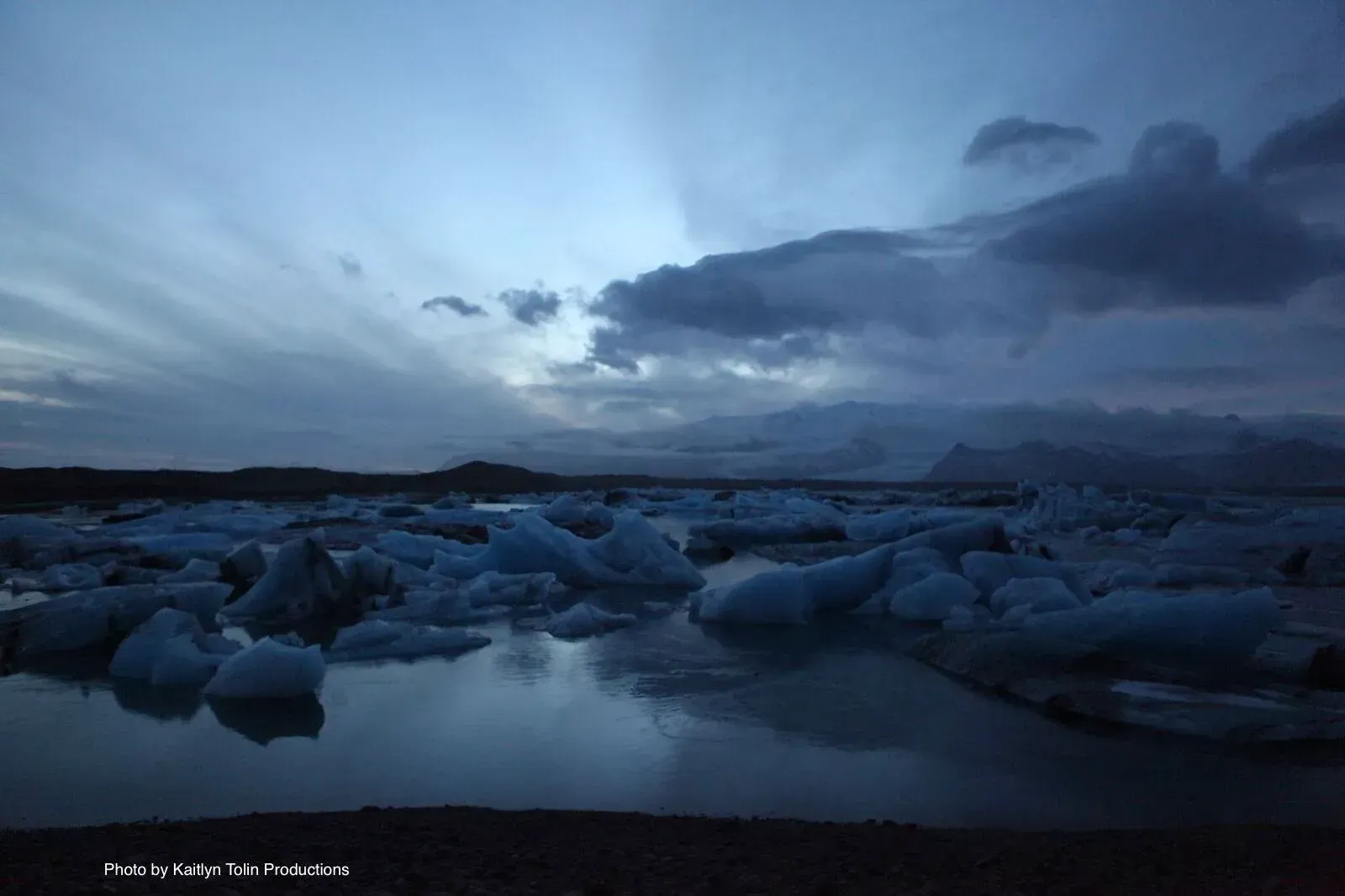Seas Rise, & Communities Follow
Bonn, Germany – Earlier this month, the world’s greatest superpower showed up to a climate disruption summit with a band of fossil fuel representatives. At the 23rd annual Conference of Parties, hosted by Fiji in Bonn, Germany, the world asked us to bring our best- and we drafted the worst players first.
Yet in defense of the grotesque offering we brought to this year’s negotiations, White House Climate Advisor David Banks had an explanation, assuring the intent was “to make sure that all energy sources and forms have as much of a level playing field as possible.”
While this is a petty excuse for bringing climate deniers to a climate conference, Banks was right about one thing: at a meeting designed to plan our move past fossil fuels, these executives were certainly the minority. However, they weren’t the only minority group at Bonn pleading for fairness, equity, & a “level playing field.”
The small village of Kivalina, Alaska, is one of many regions that has been pleading for a level playing field for decades.
21 feet of the island’s fragile coastline vanished overnight in October 2004, as floodwaters and 30 foot storm surf slammed against its thawing foundation. As violent seas devoured the island, community members scrambled for loose debris, constructing a makeshift seawall to protect the single road leading to the island. The seas were too rough to evacuate by boat. The skies were too violent to evacuate by plane. The community bunkered down on their crumbling island like a sinking ship with no escape, and waited.
Kivalina has been waiting for decades. Located on a narrow barrier island approximately 120 miles north of the Arctic circle, this community of Alaska Natives has been asking for relocation assistance for over 20 years, to no avail.
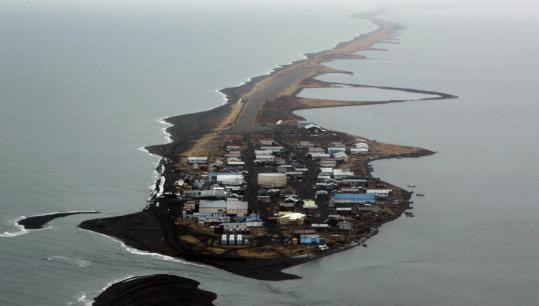
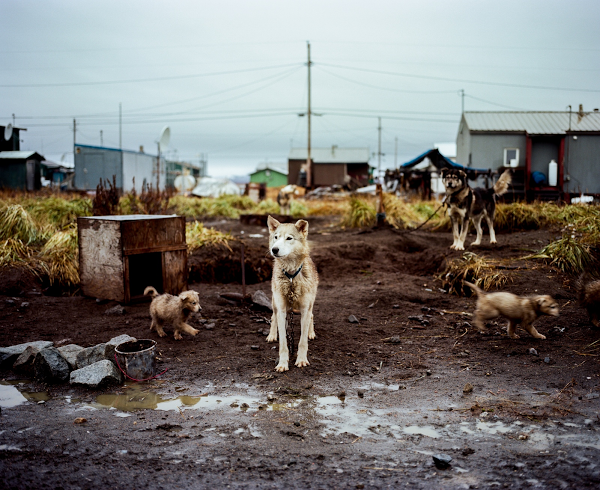
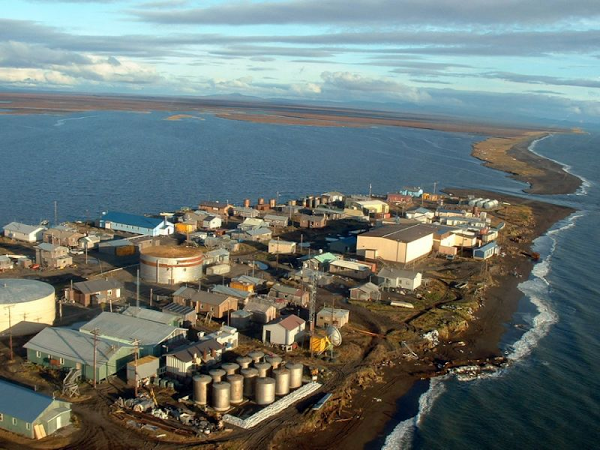
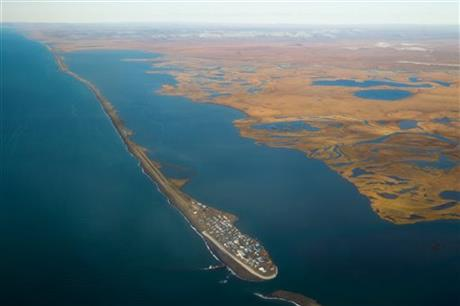
Photo by Don Bartletti, Los Angeles Times
Photo by Ash Adams Photography
Photo by Millie Hawley, Sept. 2005
Photo by Kivalina Road Project
As temperatures in the arctic rise at twice the rate of the rest of the world, Kivalina faces intensifying weather events, rapid erosion, devastating floods, and melting permafrost that it is causing the island’s ancient foundation to sink into the Chukchi sea. The National Oceanic and Atmospheric Administration calculated that the vulnerable island lost half of its livable land mass in a span of 50 years, and the Army Corps of Engineers estimates that it will be uninhabitable by 2025. Kivalina is not alone; Elizabeth Marino states in her book, Fierce Climate, Sacred Ground, that 86% of Alaska Native Villages suffer from erosion and flooding.
While an ecological problem on the surface, these thawing communities suffer more than a geographic disadvantage. The scale of disaster that indigenous and developing regions like Kivalina face today says less about the devastation of rising seas and collapsing glaciers, and more about the all-encompassing wrath of an uneven playing field.
Hidden within the history of Kivalina is the evident role of federal institutions in causing and perpetuating dire circumstances, the social roots of ecological disaster, and the subsequent need for community leaders – educators, writers, civil government, activists – in mobilizing the public against a warming atmosphere and politicians that refuse to act.
Like other regions around the world suffering climate displacement, Kivalina’s ecological catastrophe began centuries before extreme weather and rising seas.
Originally inhabited by subsistence communities whose survival depended on a close relationship with the land, when the first European settlers arrived in the arctic in the late eighteenth century, everything changed. Forced servitude and subjugation, white man’s law, cultural erasure, and chauvinistic assimilation measures drastically contributed to the lopsided power dynamics that exacerbate climate violence in the region today. Economic change and cultural whitewashing robbed communities of democratic aspiration. Federal legislation undermined indigenous land claims, vaporizing resource sovereignty and property rights. Once-nomadic communities were forced to settle and enroll their children in school. The island of Kivalina itself was never a permanent settlement until state assimilation made it one, unveiling unsavory dimensions of state authority that forced Kivalina, involuntarily, into the dire circumstances of today.
These untold histories of exclusion and dispossession unveil the social roots of Kivalina’s ecological crisis. Ghosted from a development paradigm that reduces Alaska Natives to surplus people, Kivalina’s disappearance into polar seas spectacles its disappearance from visions of progress.
“There wasn’t anyone we could talk to about global warming and what it was doing to our environment,” states Tribal Administrator Colleen Swan, “There’s no agency in the federal government that deals with climate change.”
There is no agency dedicated to the biggest public health, economic, national security, and ecological crisis humanity has ever faced, and the individuals tasked to resolve it just brought fossil fuel executives to a climate conference. Yet climate summits themselves are limited in their ability to heal. As University of California Environmental Studies Professor Dr. David Pellow exclaimed last week,
“Republicans think they’re evil, democrats think they’re revolutionary, and I know they don’t work.”
Market-based strategies do not address the institutionalized injustice – the history of slavery and dispossession – that provided the fundamental economic foundation for today’s circumstances.
Cap and trade mechanisms reward filthy coal, hydro, and agrofuel operations, increasing emissions, deforestation, and land evictions. Developing and indigenous regions, disproportionately impacted by a crisis they did not cause, are removed from debate. Wealthy nations reject reconciliation measures, forgetting that our industrialized rise to power was fueled by resources siphoned inequitably from the Global South, at the cost of their earth, air, and water. After 23 years of negotiations, there is still no legally binding solution.
However, the climate crisis runs deeper than political boundaries. As we pray for new political figures to enter office and save our environment, the same individuals remain deeply committed to activities antithetical to the notion of a stable, equitable planet: militarism, neo-colonialism, genocide, ecocide, the list goes on. The very notion of our desperate reliance on federal figures conscripts the creators of an uneven playing field to fix it, and suggests that the bright minds of the American public can do a heck of a lot better.
The public is taking action. In Kivalina, community members are uniting in relocation efforts due to stifling inaction from above. Cities across the United States are transitioning to 100% renewable energy. As political leaders’ faces cascade across television screens, granted some holy recognition by the media like they’re the ones solely responsible for saving us, they maintain striking levels of apathy and disdain in the face of ecological collapse. In fact, the news displays more of the people who refuse to act than of the issue itself. Given no honest assessment of the problem, nor agency to act, it’s no wonder we feel helpless.
We need community leaders to create the avenues of hope that national leadership has failed to provide. We need journalists, teachers and educators, small business owners, and civil governments, to mobilize for our health, security, and a functioning democracy. We need city officials to provide solutions, invite public involvement and innovation, and initiate spectacular mobilization.
Climate disruption is an unequal beast right now, but there will be no winners in a world where we do nothing. As scholar activist Margaret Klein Salamon points out, the public is looking to environmental organizations, the media, and leaders, asking if they are calling this an emergency. As the single road leading into Kivalina becomes inundated by the floodwaters of voluntary inaction, roads towards necessary change still exist.
What will you do?
COMMUNITY LEADERS. Take Action.
Contact Groundswell to contribute today.
Commonly Asked Questions:
“What is ‘climate disruption,’ and how is it different from ‘climate change?’”
Climate disruption is another term for “climate change.” Some scholars choose to use “climate disruption” or “climate chaos,” to better encapsulate the scale of change we are experiencing.
“How does hydroelectric power generation contribute to climate change?”
While commonly proposed as clean energy, hydroelectric power has unforeseen social and environmental costs. Reliant on mega dams, these enormous projects flood enormous swaths of land, displacing somewhere between 40 and 80 million people worldwide. Floodwaters also inundate plant life, causing rotting organic matter to produce methane, a potent greenhouse gas. Flooded territory also deepens food insecurity by destroying farmlands, and increases risks for water-borne illnesses.
“How do I get involved and mobilize my community?”
See our “TAKE ACTION” page for a list of ways you can get involved. See our “Contact” page to contribute your thoughts, art, writing, and various works to Groundswell.
Further Reading on Kivalina:
Community Relocation Efforts
Sierra Magazine: Climate Change is Driving Residents of Kivalina From Their Homes
How A Tiny Alaska Town Is Leading The Way On Climate Change
Further Reading on Climate & Bonn Talks:
The Climate Mobilization
We Are Still In (Paris Agreement)
The Climate Reality Project
Interview between Reporter Amy Goodman & Climate Advisor David Banks
The Guardian: America’s Climate Refugees
Democracy Now! Activists Condemn Failure of COP23 to Address Interrelated Crises of Climate, Energy & Inequality
This article was written with the help of the following sources:
Pellow, David (2017). Climate Justice [Lecture]. Presented at the University of California, Santa Barbara. Goleta, CA.
Shearer, C. (2011). Kivalina: A Climate Change Story. Chicago, IL: Haymarket Books.
Salamon, M. (2016). Leading the Public into Emergency Mode: A New Strategy for the Climate Movement.
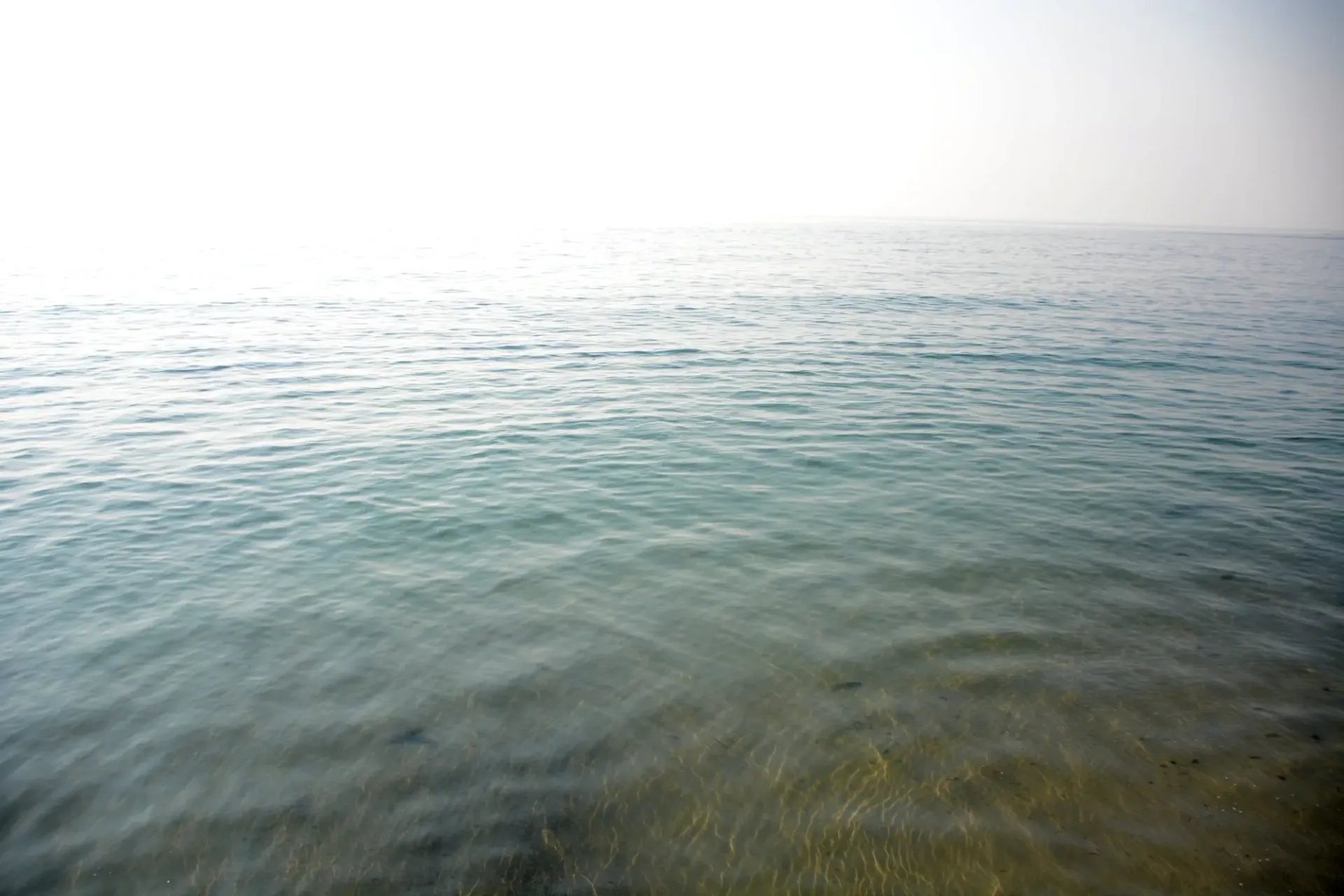

All Rights Reserved | Jules of the Sea | website by keep simple


